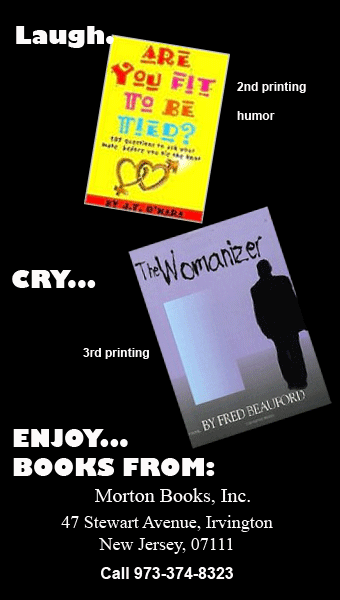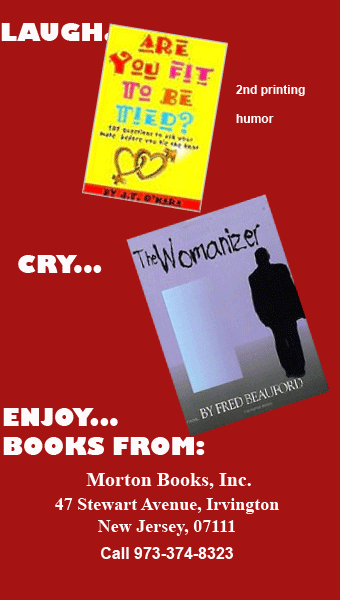REVIEWING
Wench
By Dolen Perkins-Valdez
Amistad/An Imprint of HarperCollins Publishers | 2010 | 290 pp
Reviewed by Janet Garber
What Time Hath Wrought
As bleak and “broken” as our prospects may appear in 2010, nary a one of us, I wager, Black or White, wants to return to the pre-Civil War era depicted in Wench. Nor do we have a hankering for the 1963 Mississippi of The Help, by Kathryn Stockett, when relations between the races were only marginally better. So the first thought on reading Ms. Perkins-Valdez’s debut novel is inevitably, “how horrible,” and then, right behind it: “look how far we’ve come.”
Perkins-Valdez brings home the horror of slavery, and its very personal toll, by shadowing the day-to-day lives of four female slaves from Louisiana, Tennessee, and Georgia as they meet up on “vacation” over a period of several years. They have come to Tawawa, a resort hotel in free state Ohio that winks at slave owners bringing their “wenches” along with them, ostensibly to “cook” or “mend clothes” while the slaves and masters cohabit openly in cabins fanning out from the main house. Often the women arrive in chains.
The masters relax by fishing, camping and hunting and their slaves keep busy doing chores at the hotel and venturing out shyly into the neighboring woods. We share in the stark realities of these women and see why some will risk the run for freedom while others are held captive by more than just chains.
The story sputters a bit in the beginning or maybe just catches us a bit off balance. The opening chapter introduces an electrifying character, new to the hotel, Mawu, redheaded, pushy, and outspoken:
“What kind of woman you think I is?” Mawu folded her arms across her chest.
“That’s what we’re trying to figure out,” Lizzie said. . . .
“”Well, I can sho see what kind of womens y’all is.”
Sweet let out a high-pitched belch. “What?”
“You heard me. Y’all ain’t talking about nothing, ain’t doing nothing. You probably run behind your men’s all day sweeping up they dirt.”
Well, that about sums it up (!) and we look with relish to Mawu to be the showstopper: a Huck Finn-ish, prototypical American trailblazer, and rugged individualist. But no, abruptly the focus switches and the real star is revealed to be Lizzie, a young slave of some status – at home she is allowed to live in the Big House with the master and his wife rather than the cramped slave quarters.
Singled out early by her master, “culled from the herd,” she becomes his mistress at 14, bearing him the children his own wife is unable to give him. Better fed and better dressed than the other slaves on the plantation, she is able to be with her children and get an occasional pass to see her sister. She believes the relationship she has with her master is one of Love.
From this point on, the four slaves are seen through Lizzie’s eyes; Mawu, who loathes her brutal master, serves as a catalyst and prime mover. Sweet, and pregnant with her sixth child, she seems, like Lizzie, to have a relatively benign master. The older Reenie is stuck in an incestuous union with a hated half-brother who occasionally rents out her “services.” Flashbacks take us pretty much through the life of Lizzie; we learn only little bits and pieces about the history of the others.
What is clear is that the bonds between the women are what sustain them through the crises (rapes, fires, lashings, suicides, deaths, and cruelties) and, to some extent, the perceived kindnesses of the masters. In every coloured person, Reenie says, is a survivor; the women must battle to choose life over despair.
As the women return year after year to Tawawa (a real-life resort that catered to both Northerners and Southerners), the suspense lies in seeing what actions, if any, they will take to fight back against constant humiliation, suffering and loss.
We watch them grow, not always in ways that we would like them to. By choosing as the protagonist Lizzie, rather than Mawu, Perkins-Valdez has achieved a subtler book than the one we might have expected, with more unexpected truths. She avoids sensationalism by mercifully placing most of the violent action offstage.
This discretion deepens the emotional impact, especially in our 21st century world, which is so quick to graphically depict every wound, and bathe in the glare of every perversity.
Instead, we get to study Lizzie at length and watch as she slowly catches on to her situation - the limits of her master’s love for her, and the limits of her ability to effect a change in her environment or destiny.
We know less about the other characters, as their portraits are a trifle thin and often their motivations are not fully understood. Some plot lines are not followed through on – is there a suggestion of a romance between Philip and Mawu? Is the Quaker woman part of the Underground Railroad? Does Lizzie’s master really care about her and their children or are they just “property” that he’s proud to possess? What are the prospects for Lizzie as she ages? Perhaps the author was unsure how to weave some of the subplots into her main story. Or, maybe this seeming fault is reflective of life itself, where we don’t always learn the answers to all of our questions.
There are moments of ineffable sadness in this book. We want to push characters such as Lizzie, Mawu, Reenie and Sweet to take action before it’s too late. Reluctantly, we reconsider how complex their situation is and how elusive any escape might be.
While Wench lacks the shock, scope, and the poetry of a masterpiece like Toni Morrison’s Beloved, it is not afraid to dwell upon an aspect of slavery rarely talked about – the human interactions that took place between man and woman, owner and slave, and their many offspring, who had no clear place in a black and white world.
It asks us to examine whether love can exist where such inequalities govern, and convinces us that mutual affection, at least, did. Some slave-owners were undoubtedly kinder than others, but a jailer is a jailer is a jailer…
We know how the story of slavery turns out – there’s a whisper here of abolition in the air, though no indication that a full civil war is due to erupt. Lizzie, reluctant heroine that she is, finally takes responsibility for herself and the consequences of her decisions. Before our eyes, she grows up as a woman, though not in the way anyone thought she would. Surprise! The author tells us a story and not the one we thought we signed on for.
Perkins-Valdez has given us a wonderfully thoughtful, evocative look at how people lived in the States before the Civil War, how they interacted with one another and how they felt about themselves and others. Wench is a great companion piece to Stockett’s The Help – a century apart, yet the divisions between the races still seem to be set in stone.
But maybe the lesson we should all be learning is that things do evolve in the right direction, but so slowly that we almost cannot perceive the movement. That comes later, when writers and artists look back and capture for us the flickering images.
Janet Garber is a freelance writer living in New York City.



